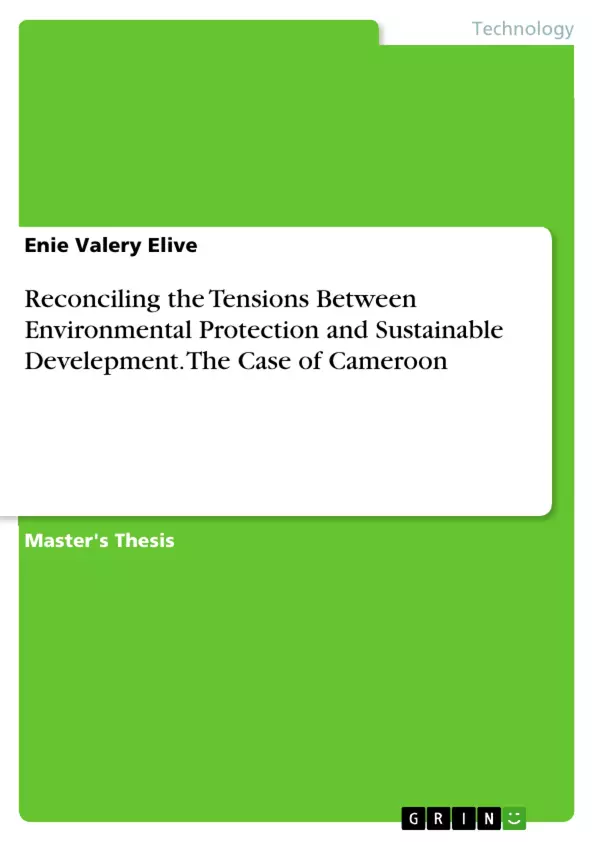The environment is essential in sustaining humanity, yet its protection has come under some criticism over the years due to its impact on the development and economic ambitions of many. This study, therefore, sets out to investigate the inconsistency between environmental protection and sustainable development, locate the tensions that emanate thereof and highlight measures available under international law to reconcile these conflicting interest.
In view of this task, the researcher employs a qualitative research methodology specifically the doctrinal method to be able to scoop through a myriad of related literature to make verbal analysis of key issues canvassed in the thesis. The researcher equally engaged in focus group discussions with some indigenes in local communities to get their views and appreciation of various programs and projects around their communities.
Inhaltsverzeichnis (Table of Contents)
- CHAPTER ONE
- GENERAL INTRODUCTION
- INTRODUCTION
- BACKGROUND TO THE STUDY
- STATEMENT OF THE PROBLEM
- RESEARCH QUESTIONS
- OBJECTIVES OF THE RESEARCH
- RESEARCH METHODOLOGY
- SIGNIFICANCE OF THE STUDY
- JUSTIFICATION FOR THE STUDY
- LIMITATIONS OF THE STUDY
- REVIEW OF THE LITERATURE
- Gaps in Literature
- CONCEPTUAL AND THEORETICAL FRAMEWORK
- The Triple Pronged Theory
Zielsetzung und Themenschwerpunkte (Objectives and Key Themes)
This study aims to investigate the inconsistencies between environmental protection and sustainable development, identify the tensions arising from this conflict, and explore measures available under international law to reconcile these opposing interests. The research delves into the complexities of balancing environmental preservation with economic aspirations, particularly in the context of developing nations.
- The tension between environmental protection and economic development
- The role of international law in reconciling these tensions
- The responsibility of developed countries in environmental protection
- The impact of environmental financing on developing countries
- The rise of green imperialism and its implications
Zusammenfassung der Kapitel (Chapter Summaries)
Chapter One: This introductory chapter provides context for the study, outlining the research problem, objectives, methodology, significance, justification, and limitations. It examines the existing literature and identifies gaps in knowledge. The chapter also presents the conceptual and theoretical framework, including the "Triple Pronged Theory" which helps to understand the interrelationship between environmental protection, sustainable development, and international law.
Schlüsselwörter (Keywords)
This study focuses on key concepts such as environmental protection, sustainable development, international law, tensions, reconciliation, developed countries, developing countries, environmental financing, green imperialism, and the "Triple Pronged Theory".
- Quote paper
- Enie Valery Elive (Author), 2021, Reconciling the Tensions Between Environmental Protection and Sustainable Develepment. The Case of Cameroon, Munich, GRIN Verlag, https://www.grin.com/document/1313933



